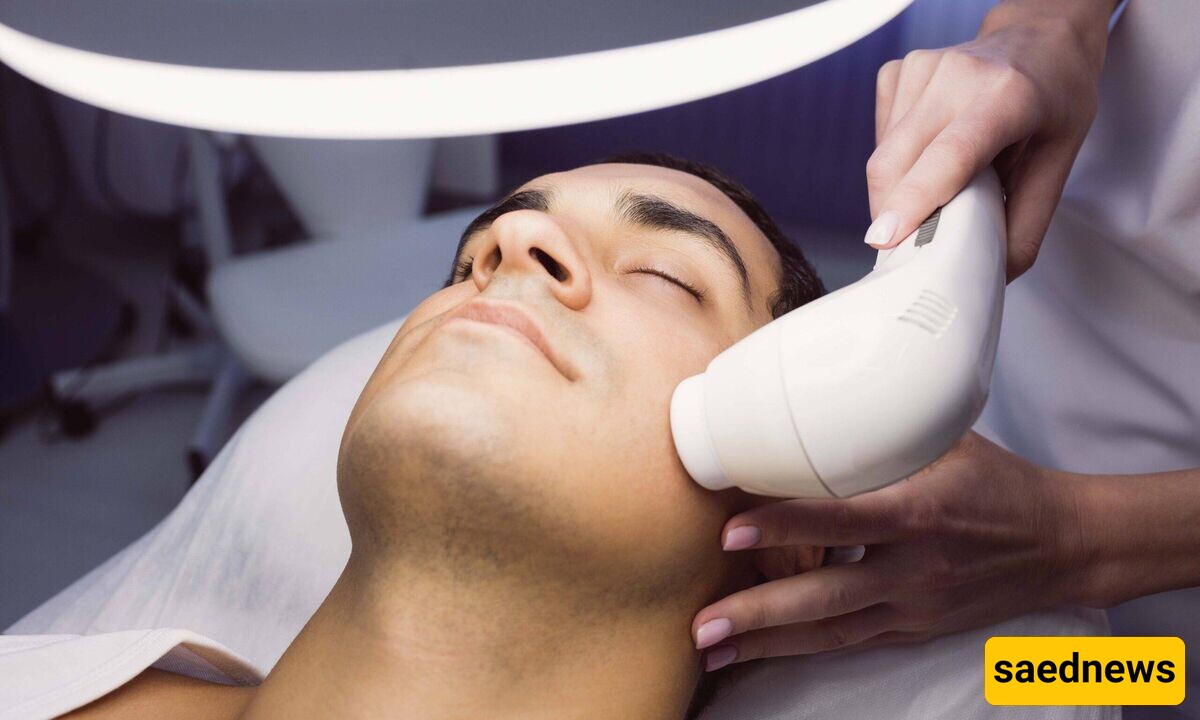SAEDNEWS: Laser hair removal works by inhibiting hair regrowth in hair follicles using focused laser beams. With consistent and regular sessions, you’ll notice a significant reduction in hair growth over time.


Laser treatments have become one of the most popular methods for removing unwanted facial and body hair. While most people find this method safe and effective, some individuals may experience minor side effects after their sessions.
During laser hair removal, the hair follicles are targeted and damaged, which can trigger a natural reaction from your body. This may result in:
Redness and skin irritation
Mild swelling, itching, or slight discoloration
These side effects are usually temporary and resemble the mild irritation experienced after shaving.
How to Manage:
Specialists often apply a numbing cream to minimize discomfort and reduce irritation.
If you're undergoing laser treatment to address pigmentation or dark spots, your skin might experience peeling after the procedure.
Peeling is generally a minor side effect and tends to resolve on its own.
In rare cases, peeling might lead to scarring if the skin is picked or scratched.
How to Manage:
Avoid touching or scratching the treated area.
Use a gentle, hydrating moisturizer to maintain skin hydration and prevent further complications.
Another potential side effect of laser treatments is skin discoloration.
The treated area might become slightly darker or lighter than the surrounding skin.
Those with lighter skin tones may be more prone to experiencing temporary dark patches after treatment.
How to Manage:
Always follow post-treatment care instructions provided by your specialist.
Consult your dermatologist if discoloration persists.
One of the more severe but rare side effects of laser treatment is burns and blisters.
These typically occur if the laser settings are incorrect or if the treatment is performed by an inexperienced technician.
Proper cooling devices should always be used during the procedure to prevent burns.
How to Prevent:
Ensure your sessions are performed by a licensed and experienced dermatologist.
Verify that proper cooling measures are in place before the procedure begins.
In some rare cases, laser treatment might trigger the opposite effect, causing an increase in hair growth in the treated area.
This reaction, known as paradoxical hypertrichosis, is uncommon but still a recognized side effect.
It often occurs when the laser settings are not optimized for the individual’s skin and hair type.
How to Prevent:
Choose a reputable clinic with trained professionals.
Discuss your skin and hair type with your specialist beforehand to ensure accurate laser calibration.
When performed by qualified professionals using advanced equipment, laser hair removal is generally safe and highly effective. However, being aware of potential side effects and knowing how to prevent or manage them is essential for achieving the best results.
Quick Tips for Safe Laser Treatments:
Always ensure treatments are carried out by trained and certified specialists.
Follow all pre- and post-treatment care instructions carefully.
Share any relevant skin conditions or allergies with your dermatologist before starting treatment.

